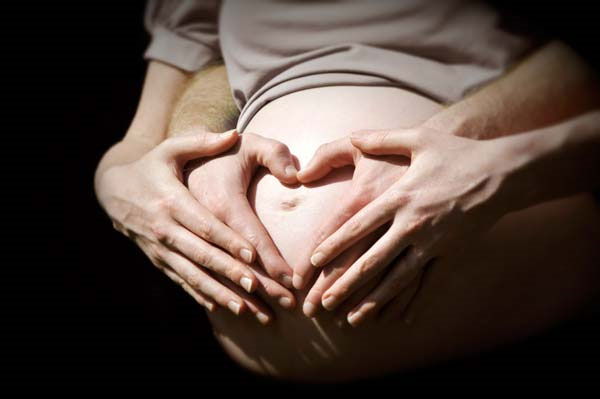Markers of Preeclampsia Found, May Help Early Diagnosis

A group of 14 biological markers might be able to predict whether a pregnant woman is at risk for developing preeclampsia, according to a small new study.
Preeclampsia is a complication of pregnancy involving high blood pressure and high levels of protein in the urine. About 4 to 5 percent of pregnant women develop preeclampsia, and it is a leading cause of death during pregnancy and childbirth for mothers around the world, the researchers say. Scientists aren't exactly sure what causes the condition, and currently the only way to relieve the symptoms is is to deliver the baby.
Doctors can't determine with high accuracy which pregnancies will go on to develop preeclampsia and which ones won't. Although symptoms are often not visible until later in pregnancy, the condition is thought to arise early on.
The new study identified markers that could detect preeclampsia early on in pregnancy. Women with these markers had 36 times the chance of developing preeclampsia than those without the markers, the researchers say.
The researchers are now validating these markers in a larger group of women. Ultimately, they hope these predictors will translate to the development of a screening test for preeclampsia.
"[The study] gives hope and the promise of a predictive test," said study author Dr. Louise Kenny, a professor of obstetrics and gynecology at the University College Cork, in Ireland. "If it translates to a user-friendly test at the patients' bedside or in a hospital setting, it will have a radical affect on [prenatal] care and hopefully will also reduce the time it takes to develop a cure for this condition," she said.
Predicting preeclampsia
Get the world’s most fascinating discoveries delivered straight to your inbox.
There are some known risk factors for preeclampsia, including having had it before and having a mother or a sister who has had the condition. However, many women who develop this complication are first time mothers without a family history of preeclampsia, Kenny said.
And while some studies have searched for biological markers for the condition, "none so far have emerged with the required sensitivity and specificity at a time in pregnancy when we could meaningfully do something about it," Kenny told MyHealthNewsDaily.
Kenny and her colleagues analyzed blood samples taken at week 15 of pregnancy, from 60 women from Auckland, New Zealand, who went on to developed preeclampsia. They also studied samples from 60 women who did not later develop preeclampsia.
They were able to find 14 markers that, when taken in combination, could predict preeclampsia fairly accurately. These markers are chemical byproducts of the reactions that occur in cells, and were mainly fats and sugars.
These predictors were then verified in a second group of 39 women from Adelaide, Australia who had preeclampsia, and 40 who did not.
Using these markers, the researchers could detect up to 90 percent of preeclampsia cases. However, 20 percent of these were false positives, meaning 20 percent of those identified as having preeclampsia actually did not have it.
Screening test
Although there currently is no cure for preeclampsia, a screening test could indicate which women should be closely watched for signs of the condition, and would alter the type of care they receive, Kenny said.
Also, a screening test might suggest which women are good candidates for preeclampsia drugs drugs that are currently in development, but not yet prescribed.
"Unless we know who is at risk, we can't give them because most pregnant women wouldn't want to take a drug unless they know the risks are outweighed by the benefits," Kenny said.
While the study results still need to be confirmed, Kenny said a test could be developed using the the markers within 3 to 5 years. However, she notes these things are difficult to predict.
The study is published in the October issue of Hypertension: Journal of the American Heart Association.

Rachael is a Live Science contributor, and was a former channel editor and senior writer for Live Science between 2010 and 2022. She has a master's degree in journalism from New York University's Science, Health and Environmental Reporting Program. She also holds a B.S. in molecular biology and an M.S. in biology from the University of California, San Diego. Her work has appeared in Scienceline, The Washington Post and Scientific American.


